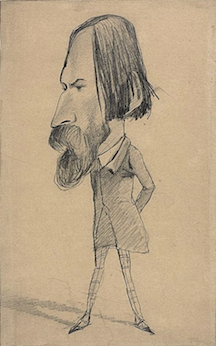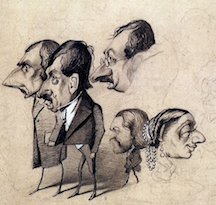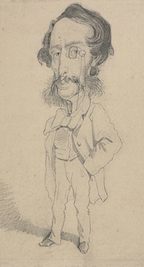Early Resistance


Early Resistance

Auguste Vacquerie, 1854, Claude Monet.

Caricature of Teachers, ca. 1855, Claude Monet.

Mario Uchard, 1855, Claude Monet.
Monet’s father was reluctant to let him study art. Monet rebelled and pursued the arts anyway. His artistic passion began with caricatures. He was forced to study Classicism, Romanticism, and Realism, which never interested him.
"Everything that is painted directly and on the spot always has a force, a power, a vivacity of touch that cannot be re-created in the studio."
~Claude Monet, 1891
“A lot of people identify Monet with Paris and urban painting or associate him with Giverny, but if you look at the beginnings and throughout his long-life career, Monet travels. He moves from town to town, takes many trips, endures harsh conditions, long train rides in his incredible devotion to find nature in all aspects, challenging himself.”
~Angelica Daneo, Denver Art Museum, Curator European Art Beforee 1900, 2019
Monet in Garden, 1922, New York Times.
In 1861, after returning from his military service in Algeria, he was inspired by the light and colors of Africa. This was when the style of Impressionism started to take form.
"The impressions of light and colour which I received there were only sorted out later, but the germ of my future researches was there."
~Claude Monet, 1900, reflecting on his time in Algeria
Monet exhibited his work at The Salon in 1865. He reluctantly participated, since The Salon wasn’t welcoming new styles of art. He only participated to appease his aunt so she would continue funding his work.
Header Images: "Impression Sunrise", 1872, Claude Monet; "Water Lillies", 1906, Claude Monet; "Woman with a Parasol - Madame Monet and Her Son", 1875, Claude Monet; "The Cliff Walk at Pourville", 1882, Claude Monet.